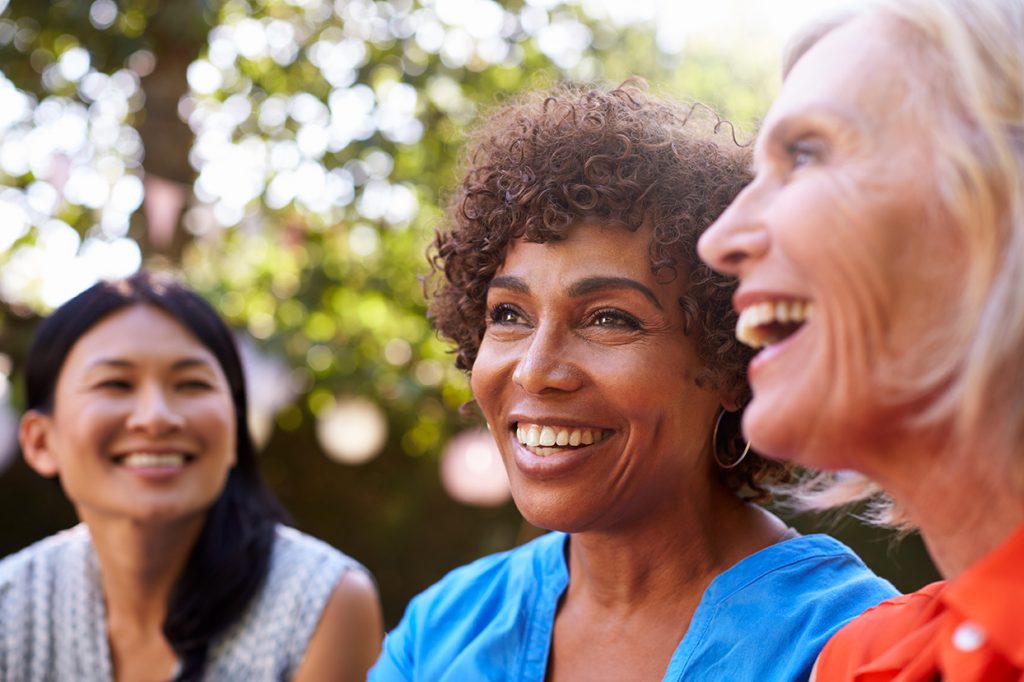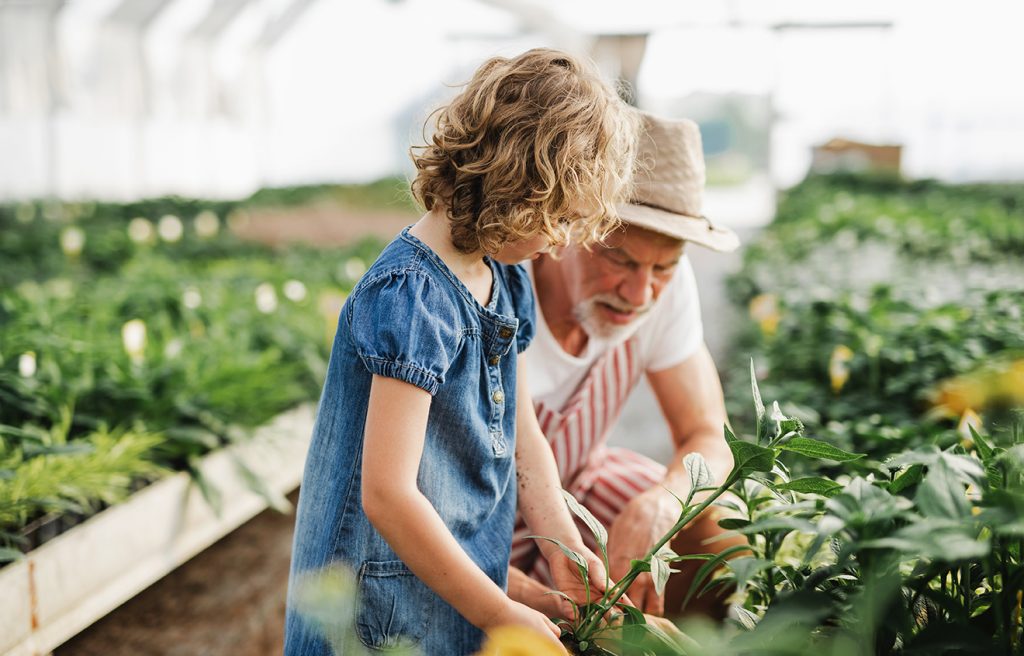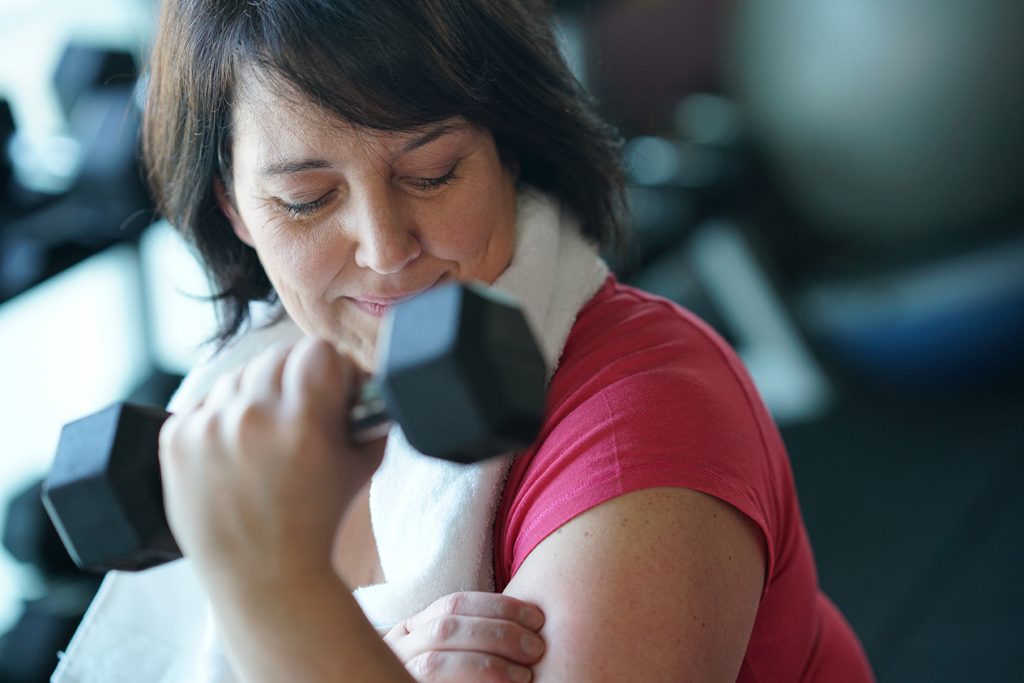Muscle as Medicine
Author: Dustin Moffitt, ND
 A three-letter word we all dread, O-L-D. The feeling of time growing on our bodies as our youth trails behind us. Aging can have such a negative connotation, but with age comes many life experiences that develop us into the wonderful human beings we are. What does aging mean to you? Is it a feeling? A changed body? A number?
A three-letter word we all dread, O-L-D. The feeling of time growing on our bodies as our youth trails behind us. Aging can have such a negative connotation, but with age comes many life experiences that develop us into the wonderful human beings we are. What does aging mean to you? Is it a feeling? A changed body? A number?
As we age, we may notice a few more aches and pains and sprout gray hairs, age spots, and wrinkles. We may find that our balance isn’t what it once was, and walking to the car over an ice-covered driveway feels like a death-defying feat. But, there is a way to slow the aging process, protect our health, and feel youthful throughout our later years. Have you ever heard the phrase “move it or lose it?” Moving it may be the key to staying “young” and vibrant despite our chronological age. I’ll talk more about this concept in a minute, but first I want to revisit the ways we measure aging.
According to an article The Hallmarks of Aging1, there are nine signs that help us measure age2. They take into account the biochemical, genetic, and physiological changes that occur as the years pass.
Epigenetic Alterations
Epigenetics refers to external modifications to DNA that determine how particular genes are expressed. These alterations do not change the DNA sequence itself. Instead, they affect how our cells read or interpret genes. We are finding that environmental factors play a large role in these alterations. More years under our belt means more exposure to environmental factors, and therefore a greater likelihood of alterations in the epigenome.
Loss of Proteostasis
Proteostasis or “protein homeostasis” means that proteins in the body are abundant and in their original state. As we age, proteins may get damaged or misfolded, affecting their ability to do their many jobs and may even make them toxic.
Deregulated Nutrient Sensing
Deregulated nutrient sensing means that body is not able to detect nor use nutrients as it should.
Mitochondrial Dysfunction
Mitochondria are considered the “powerhouses of the cell” and are where most of the cell’s energy gets produced. As we age, mitochondria become less efficient or may even lose the ability to create energy altogether.
Cellular Senescence
When we are young, our cells replicate rapidly. As we age, certain cells lose the ability to divide. These cells don’t die but instead hang around, take up space, and secrete damaging molecules around them.
Stem Cell Exhaustion
Stem cells are our ultimate source of new cells. What is unique about stem cells is their ability to replicate when needed and stop when they are not. However, this ability to start or stop the process as required declines with age.
Altered Intercellular Communication
Not only do cells degrade over time, but their ability to communicate with each other does as well. This means certain tissues and organs are not getting the information they need to function optimally.
Genomic Instability
Your DNA is easily damaged, but there are also mechanisms in place for DNA repair. However, the repair isn’t always perfect, and as we age, the damage accumulates. Compromised DNA can lead to accelerated aging and disease.
Telomere Shortening
Telomeres are like the endcaps on chromosomes. They play a vital role in regulating gene expression and the functioning of chromosomes. Telomeres shorten as we age as a result of normal cell division and other damaging processes. Critically short telomeres signal the turning off of cell replication.
With the accumulation of the factors mentioned above, we do indeed become old. The million-dollar question is: How do we age less rapidly and retain some of our youth?
 The answer is to lead a life that builds you up rather than breaks you down – a life that contributes to physical, mental, and spiritual well-being.
The answer is to lead a life that builds you up rather than breaks you down – a life that contributes to physical, mental, and spiritual well-being.
Mental well-being comes from placing attention on things that make you feel good or positive. It also comes from talking about or letting go of the things that do not. Spiritual well-being may come from being involved in your community, developing a meditation practice, or adopting the customs of your chosen religion.
Physical well-being is achieved through a healthy diet and exercise. This doesn’t mean going on a diet, per se, but eating in a way that fuels your body with nutrient-dense foods. Exercise comes in many forms. Do daily chores count? Yes, but are they the only thing we should rely on? No. Ideally, we incorporate many forms of movement. Walking, yoga, climbing stairs, running, jogging, hiking, rock climbing, weightlifting, etc., are all good options.
The American Heart Association and Center for Disease Control recommend getting at least 150 minutes of moderate-intensity aerobic activity, or 75 minutes of vigorous aerobic activity, or a combination of both spread throughout the week. They also recommend adding moderate- to high-intensity muscle-strengthening activities like resistance training at least two days per week. You can excel even more by being active at least 300 minutes (5 hours) per week. 3
Additionally, we should all spend less time sitting. Excessive sitting may be as detrimental to our health as smoking. The good news is that even light-intensity activity can offset some of the risks of being sedentary. Every movement counts.
Recommendations vs. Reality
We know how much exercise we are supposed to get, but how are we really doing? Statistics from The U.S. Department of Health & Human Services4 indicate that we could use a little work – and working out.
On average:
- Only one in three children are physically active every day.
- Less than 5% of adults participate in 30 minutes of physical activity each day; only one in three adults receive the recommended amount of physical activity each week.
- Only 35 – 44% of adults 75 years or older are physically active, and 28-34% of adults ages 65-74 are physically active.
- More than 80% of adults do not meet the guidelines for both aerobic and muscle-strengthening activities. More than 80% of adolescents do not do enough aerobic physical activity to meet the guidelines for youth.
- 27% of adults engage in weight training.
 Muscle is Medicine
Muscle is Medicine
We know that skeletal muscles form connections between our bones and joints, acting as levers and pullies to create movement and controlled stability. But, our muscles are more than that. Truly, we can think of muscle as medicine5 for our body.
Here’s why. In addition to skeletal muscle, we also have cardiac muscle making up our heart and smooth muscle that makes up parts of other organs assisting with their functionality. Without muscle mass our hearts do not pump blood, and our lungs cannot take in or expel air. There are over 600 muscles in our body that comprise 40% of our body weight on average. The benefits of having and maintaining lean muscle mass extend beyond simply making us strong.
Important functions of muscle include:
- Pumping blood (heart)
- Moving blood throughout the body, distributing nutrients to organs, tissues, and all major body parts
- Expanding and contracting organs (i.e., the lungs, to facilitate air exchange)
- Facilitating movement in the digestive tract and through other organs
- Moving and protecting the body
Additional benefits associated with lean muscle mass:
Increases cognitive function via BDNF (Brain-derived Neurotrophic Factor)
- Helps maintain blood sugar regulation and insulin sensitivity
- Increases metabolism through thermogenesis
- Decreases inflammation
- Increases testosterone (beneficial for both men and women)
- Increases Human Growth Hormone
- Assists in the conversion of thyroid hormone from the inactive to the active form
- Increases mitochondrial synthesis
- Reduces pain (most notably back pain, but also neck pain, joint pain, fibromyalgia pain, etc.)
- Improves immune function
- Offers a better prognosis if confronted with a cancer diagnosis
- Fights against conditions such as Cachexia from HIV, AIDs, CHF, and kidney disease
- Assists in chronic disease prevention 6
- Increases bone density, and prevents structural imbalances and injuries
- Supports & protects organs (lack of muscle tissue, particularly in the abdominal and lower back regions of the torso, allows organs to shift and pull
- Provides support for our joints, ligaments, and tendons, preventing injury and the need for major surgeries and joint repair
- Improves mood
- Increases adaptive abilities to various stressors as we age
- Increases healing
- Growth factors coordinate to promote cell and fiber growth after injury
How to increase Lean Muscle Mass
Resistance training is an essential and powerful tool for increasing lean muscle mass. You can use your own bodyweight for resistance performing exercises like push-ups, planks, squats, and lunges, to name a few. Or, you can opt for weight training. When using weights, it is important to choose an appropriate weight: not too easy to lift, but not too heavy to move without injury. Using proper form is crucial, so you might even consider working with a trainer or attending classes (pandemic permitting, of course!) in the beginning. Include exercises that work all different parts of your body. Full-body strength training routines allow you to do this during the same session, but some people prefer to focus on one area of the body each day. You can choose to structure your program however you like, but make sure no muscle goes unturned! Studies also reveal that varying the amount lifted increases muscle strength and decreases the likelihood of falls7.
I personally like to focus on functional training that adds weight to movements similar to those I might do on a normal day. This essentially makes me stronger and better at the things I already do and keeps me from getting injured.
The numerous benefits of building lean muscle mass are why I encourage all my patients to establish a movement routine that also includes weight training. Simply put, take the time to regularly pick up heavy things (safely) and place them back down.
If pain is something that is holding you back, then we are here to help. We have numerous therapies to get you back on your feet and back to building muscle as medicine for your body.
REFERENCES 1) Lopez-Otin, C., & Blasco, M. The Hallmarks of Aging. Cell, 153(6), 1194-1217. DOI: https://doi.org/10.1016/j.cell.2013.05.039 2) https://www.afar.org/what-are-the-hallmarks-of-aging 3) https://www.heart.org/en/healthy-living/fitness/fitness-basics/aha-recs-for-physical-activity-in-adults 4) https://www.hhs.gov/fitness/resource-center/facts-and-statistics/index.html 5) https://www.health.harvard.edu/staying-healthy/the-new-medicine-muscle-strength 6) https://sportsmedicine-open.springeropen.com/articles/10.1186/s40798-020-00271-w 7) PMID: 24760166





